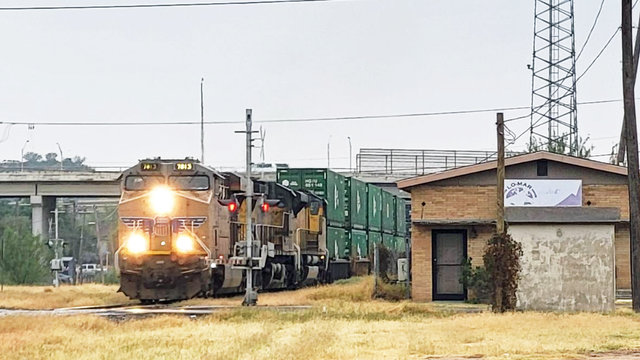
November 21, 2025
Union Pacific Enhances Safety and Security at Eagle Pass Border Crossing
This change, which kicked off Nov. 20, enhances safety, strengthens border security and aligns with competitor practices at the northern and southern border. It reduces by 50% the time it takes to move trains across the international bridge compared to the previous method of changing crews on the rail bridge.
Mexican partner crews from Ferromex will travel seven miles from the border to the nearby Eagle Pass yard, where the change to a U.S. crew will occur. The Mexican crews have been trained and qualified by Union Pacific, including certification under Federal Railroad Administration rules for the territory. Union Pacific employees will continue to handle all U.S.-based operations, including taking control of inbound trains, switching cars, building outbound trains and serving local customers.
Before this updated process, crew changes at Eagle Pass would occur on the single-track international bridge, requiring trains to stop while crews disembark and walk back across the structure. This process can take 30-40 minutes and increases the amount of time a train sits idle on the bridge, heightening exposure for crews and increasing the risk of blocked crossings, vandalism, theft or other security concerns. Moving the interchange to a controlled rail yard reduces these risks and allows trains to transition more safely and efficiently. Additionally, seamless transfers at the border enhance the rail industry’s ability to compete and remove trucks from the road.
“This change enhances safety for crews, strengthens border security and creates a more fluid process at this key rail gateway,” said Eric Gehringer, executive vice president-Operations, Union Pacific Railroad. “Interchanging trains inside a secure rail yard is a proven approach used at other border crossings, and it allows us to manage train movements more safely and efficiently.”
The updated procedure is part of the U.S. Customs and Border Protection’s federal Secure Corridor Initiative and follows a successful pilot conducted earlier this year.